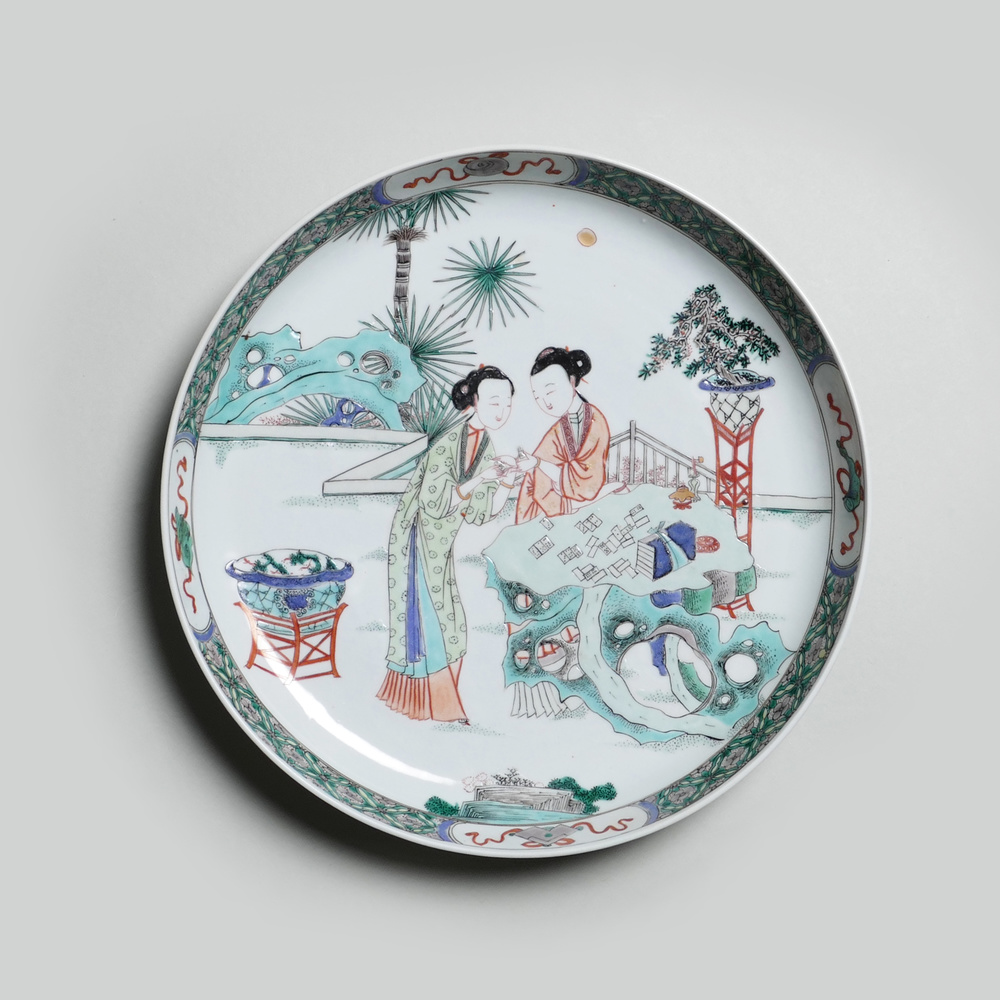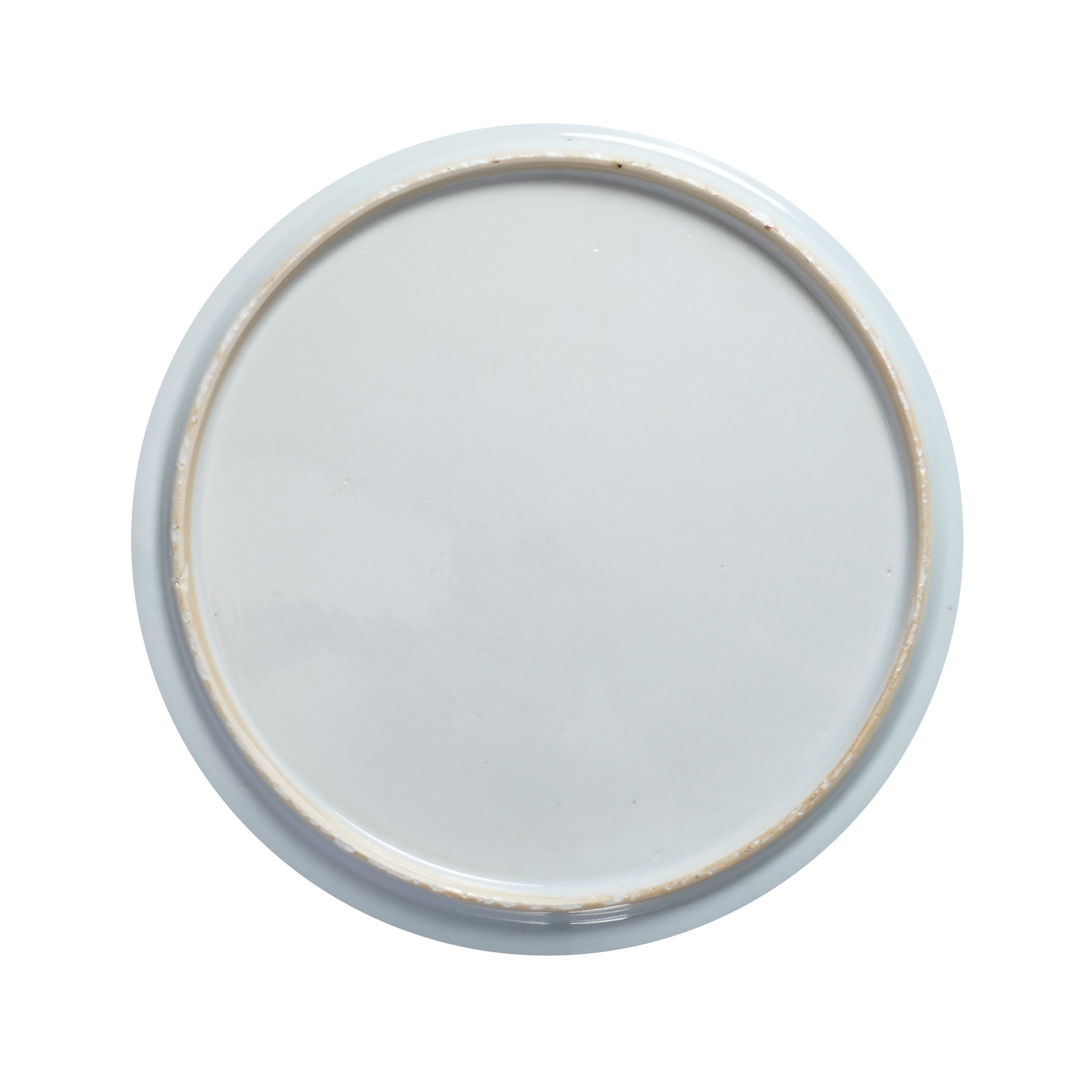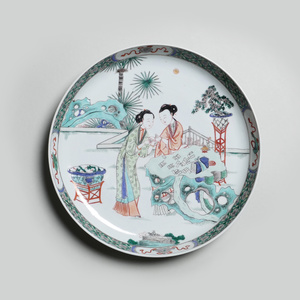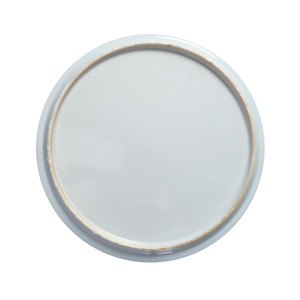Kangxi period (1662-1722)
The shallow dish is of flat form with straight sharply rounded sides. The interior is painted in iron-red, gilt and overglaze enamels with two ladies on a terrace playing dominoes. The ladies are standing beside a table made of a taihu rock, each holding a domino tile. The other thirty domino tiles are scattered on the table accompanied by books and incense implements. The ladies are flanked by a fish jar and a jardinière containing a small tree. The scene is encircled by a geometric border of florets interrupted by four panels containing ribboned symbols.
24 cm diameter
Provenance: Formerly in a Dutch private collection
Acquired at Sotheby's Amsterdam, 25 January 1977, lot 270
Dyer Ball in Things Chinese, 1903, revised by E. Chalmers Werner (ed.), Singapore, 1989, p.528, describes dominoes as a typical Chinese game. According to Andrew Law, the earliest extant manual on dominoes is by Qu You (1347-1433) who wrote the Xuanhe Paipu(Manual of Dominoes in the Xuanhe period 1119-1125). Chinese dominoes were originally of wood, bone, or ivory. After the late Ming dynasty (c. 1500) they appeared on card or paper. There are 32 dominoes in the set altogether, which are all visible on the present dish. For further reading on this subject, see Andrew Lo, China’s Passion for Pai: Playing Cards, Dominoes and Mahjong, and Mackenzie, C. and Finkel, I., (eds.), Asian Games: The Art of Contest, Asia Society, New York, pp. 216-231.




